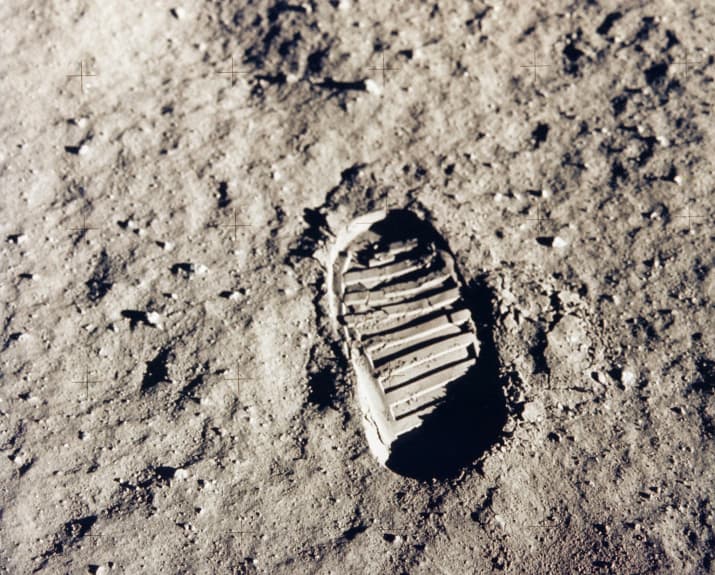As a result of the space race between USA and the Soviet Union in the 1950s, NASA was created in 1958.
After some setbacks and failed rocket launches, the first U.S. satellite, Explorer 1, reached orbit on January 31, 1958. Not content to simply circle the Earth, Explorer 1 sought to study the planet and its environment.
The National Aeronautics and Space Administration (NASA) is the U.S. government agency responsible for leading the nation’s explorations of space. Its mission is “to reach for new heights and reveal the unknown so that what we do and learn will benefit all humankind.” Since its formation in 1958, NASA has taken to the skies both on and off Earth.
The seven astronauts of NASA’s Mercury program pose for a photo in 1960. From top left to bottom right: Walter M. Schirra, Deke Slayton, John Glenn Jr., M. Scott Carpenter, Alan B. Shepard Jr., Virgil I. Grissom, and Leroy Gordon Cooper Jr.
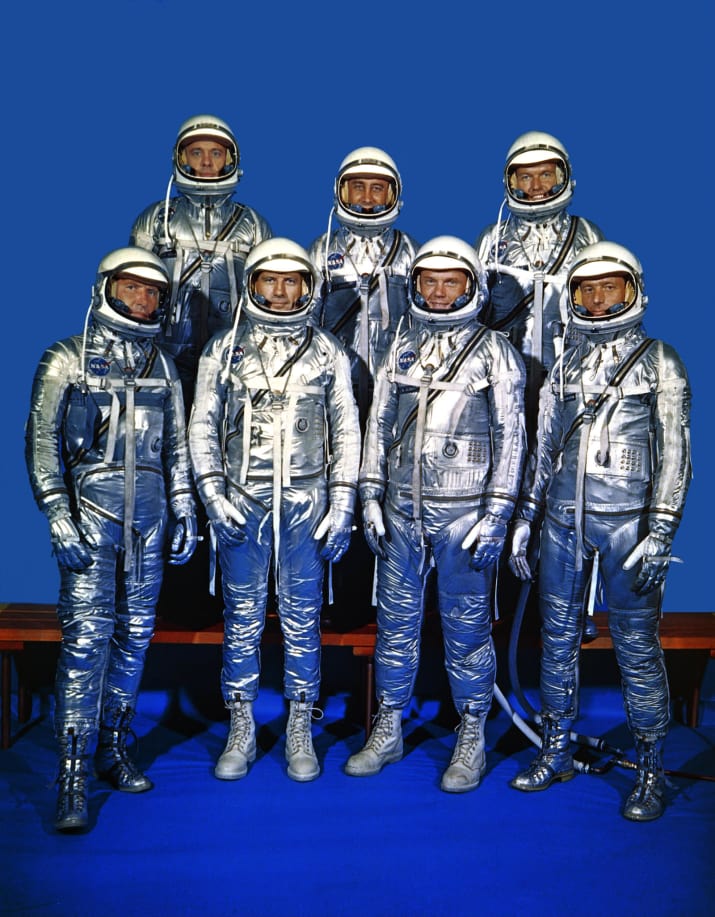
Rocket scientist Werner von Braun and President John F. Kennedy tour Cape Canaveral, Florida on November 16th, 1963.
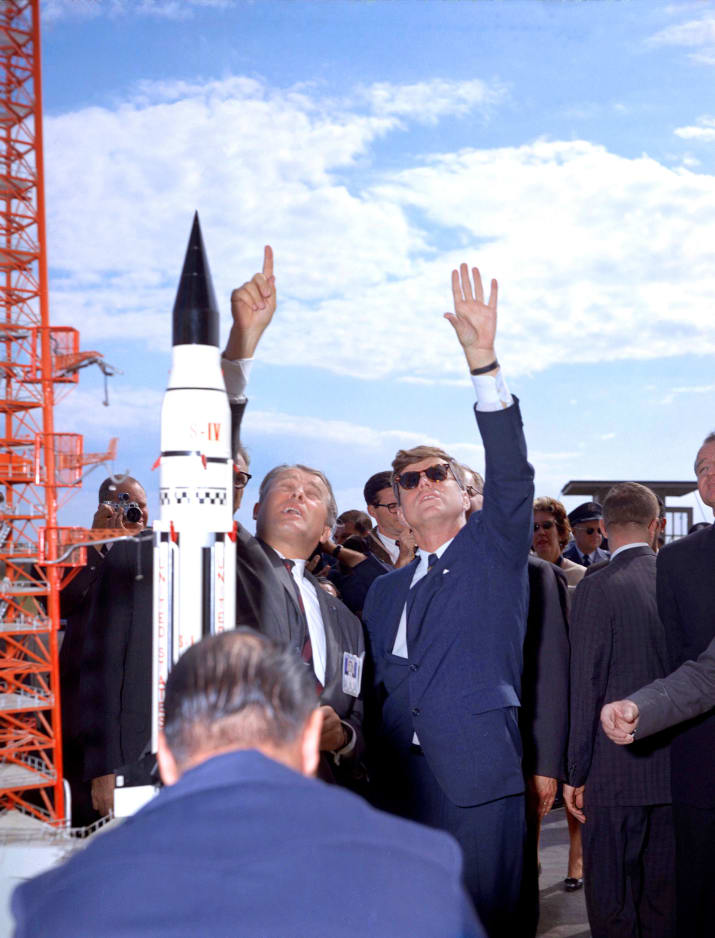
Ham, a chimpanzee astronaut that flew aboard the Mercury-Redstone 2 spacecraft, is greeted by Commander Ralph A. Brackett on the USS Donner, after being recovered from his flight at sea on January 31st, 1961.
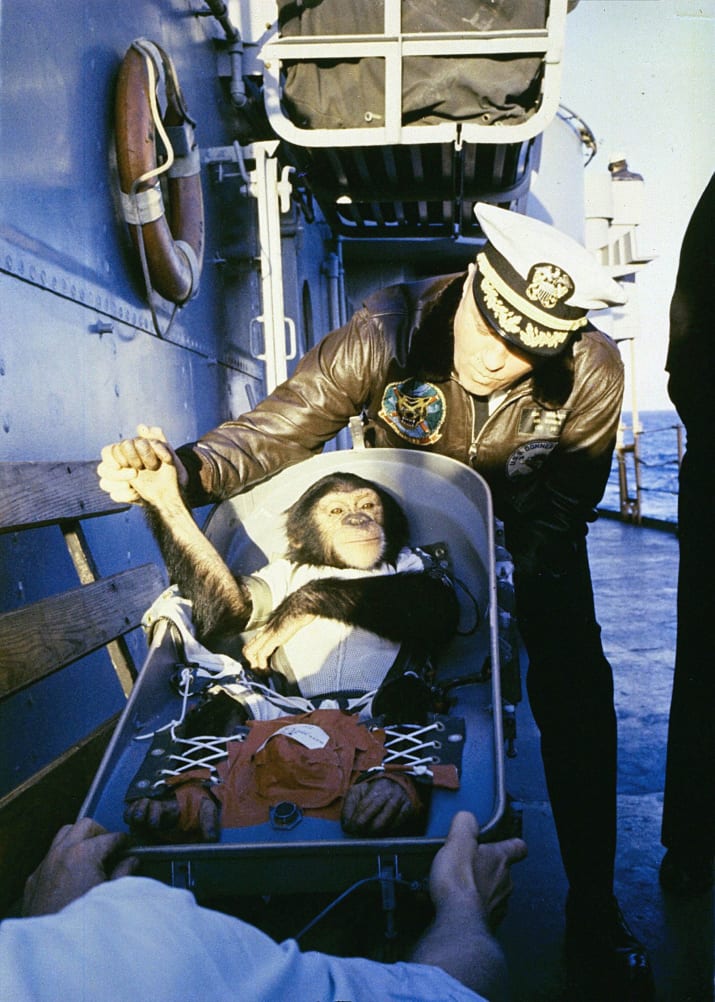
A combo of four pictures showing Ham, the chimpanzee, during his space flight in 1961, taken by a 16mm camera that was trained on his face during the 155-mile high, 5,000 miles-an-hour ride.
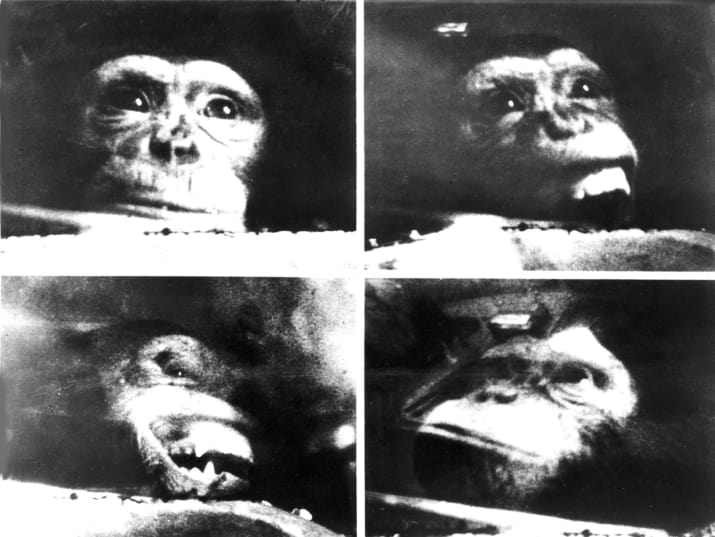
U.S. Army engineer Roland Van Allen is seen soldering components to a plastic telemetering card to be installed in a satellite launched in 1957.
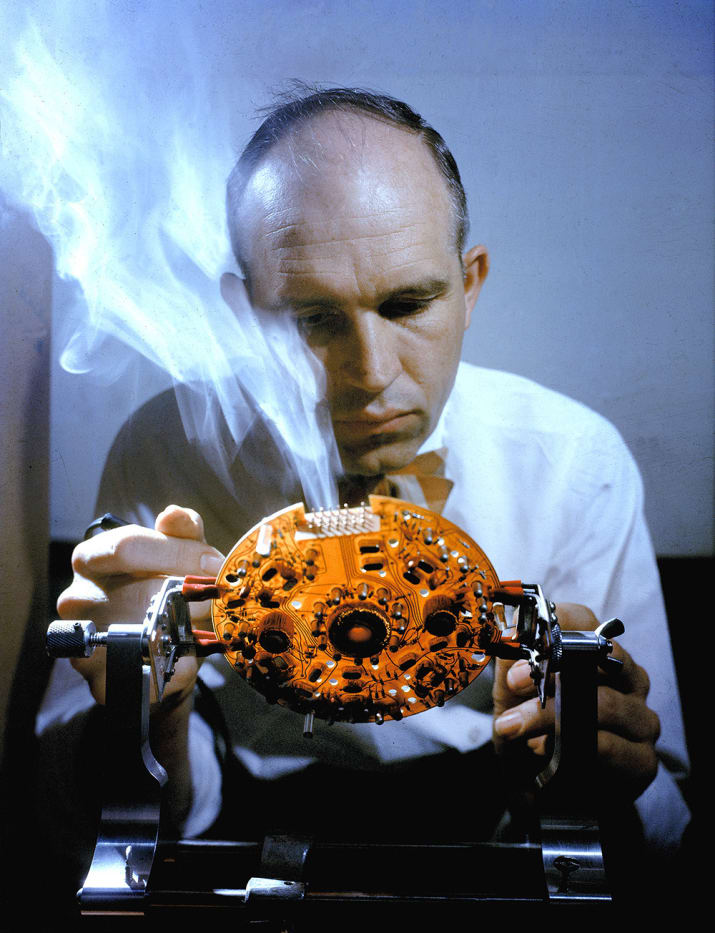
Astronaut John Herschell Glenn Jr., poses for a photo in 1961 before becoming the first American to carry out a space orbit of the earth in the Project Mercury capsule Friendship 7.
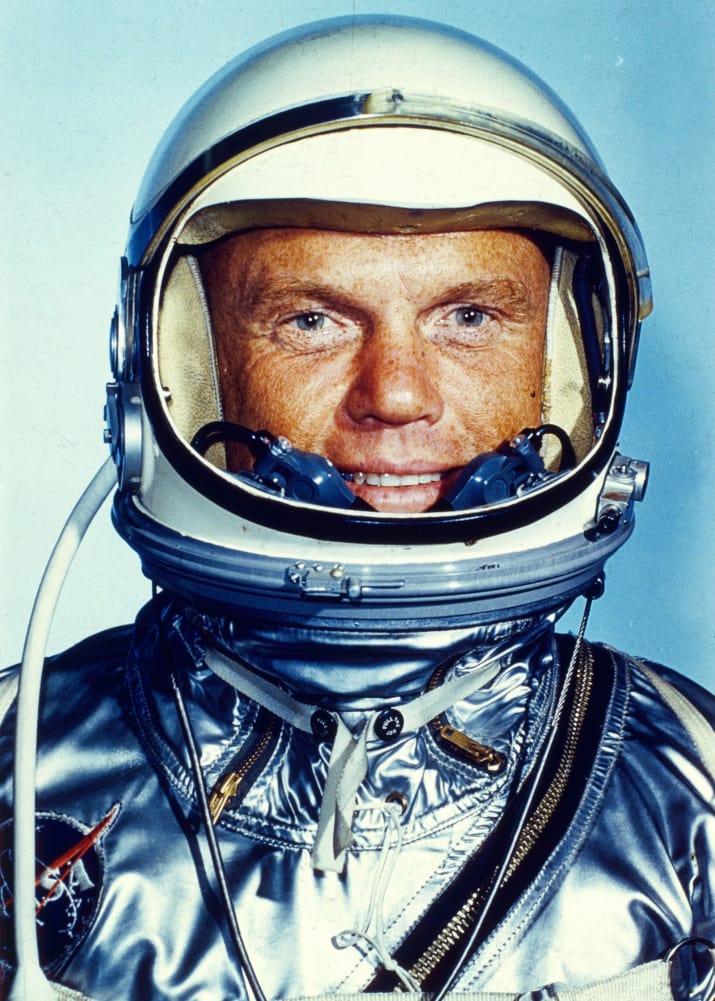
Astronauts Frank Borman, Neil Armstrong, John Young and Deke Slayton (left to right) are shown during desert survival training in Reno, Nevada, 1964.
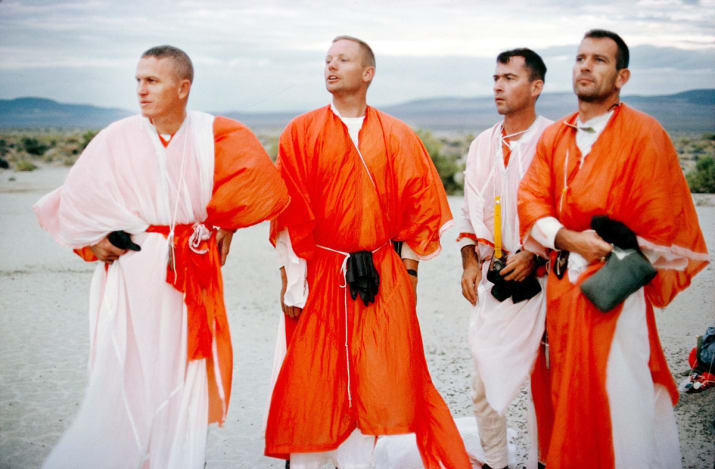
Astronauts, Buzz Aldrin (left, in blue), Charles Bassett (top, in blue), and Theodore Freeman (bottom, in orange), along with several technicians, experience weightlessness in a reduced gravity aircraft as part of their NASA mission training in 1964.

U.S. astronaut Neil Armstrong aboard a simulator practices piloting the Lunar Landing Research Vehicle in 1967, two years before the Apollo XI space mission launch to the moon.
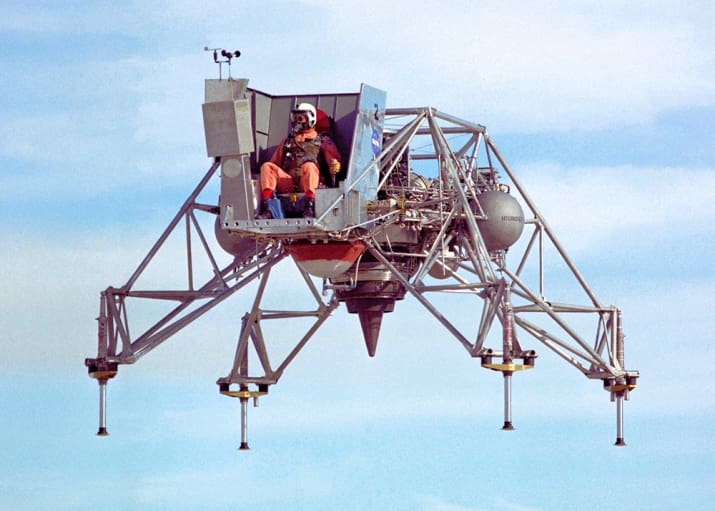
A group of the wives of Project Mercury astronauts relax and talk together in Virginia, 1959. They are, clockwise from lower left, Rene Carpenter (with platinum blond hair), Annie Glenn, Jo Schirra, Betty Grissom (on couch at right), Marjorie Slayton (on floor at right), and Trudy Cooper (standing with serving tray).
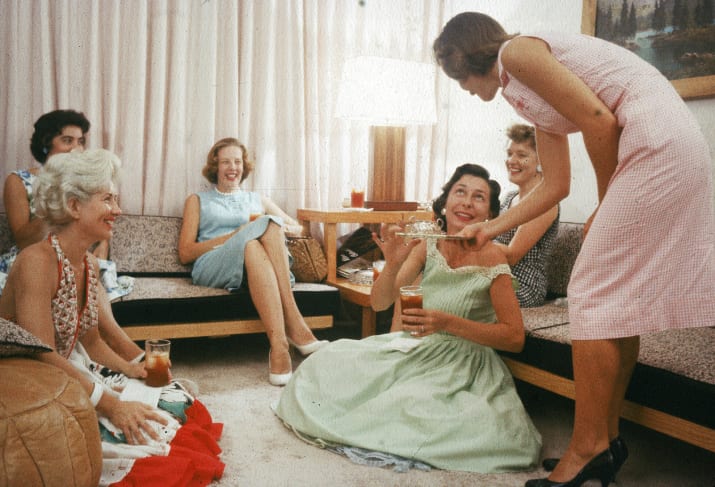
In this 1962 photo, a briefing is given by Major Rocco Petrone to President John F. Kennedy during a tour of Blockhouse 34 at the Cape Canaveral Missile Test Annex.
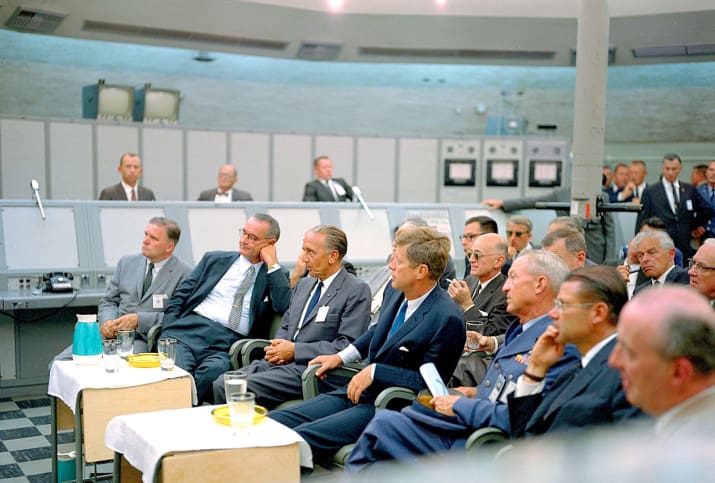
A lab technician tests a model of the Apollo Block II Saturn I for aerodynamic integrity in 1963.
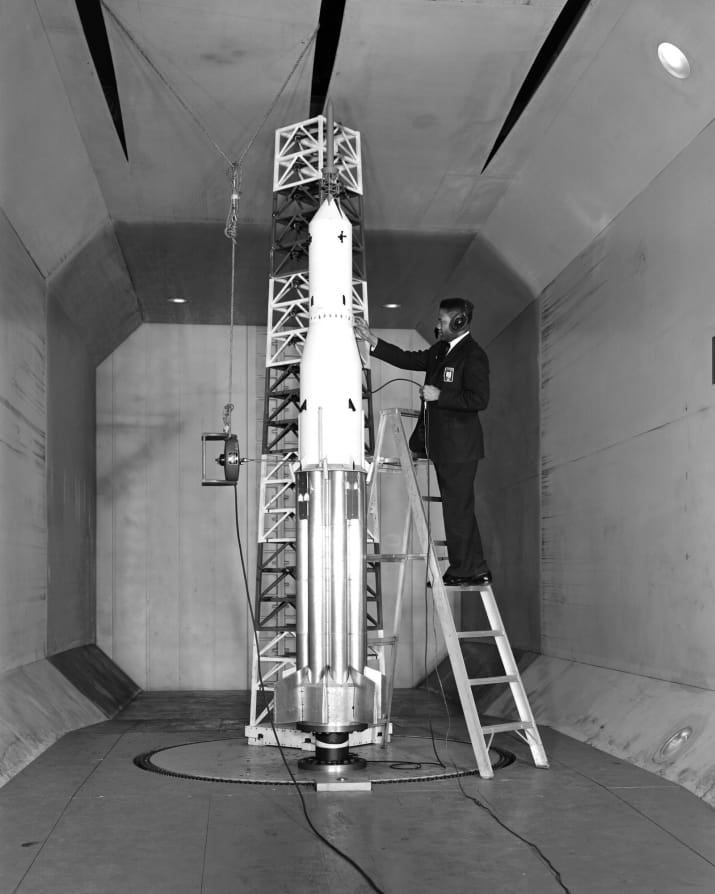
In this photo from 1964, researchers at NASA’s Langley Research Center conduct studies to determine the types of difficulties astronauts might encounter on the lunar surface, where the force of gravity is only one-sixth that of Earth.
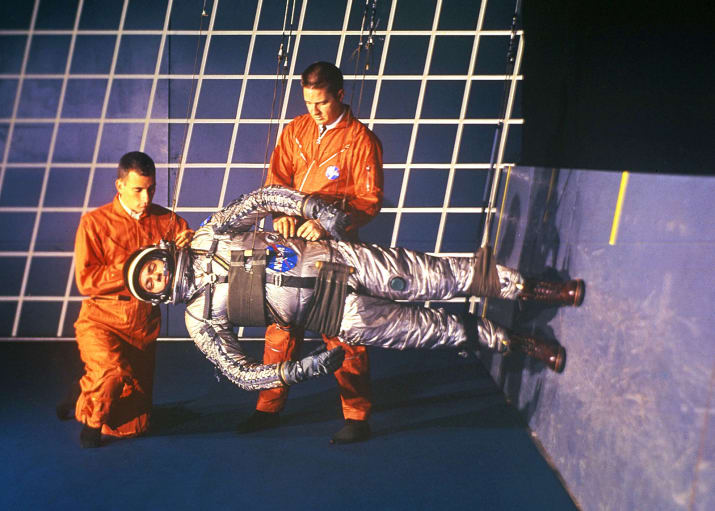
Astronauts Walter Schirra, left, and Thomas Stafford, right, practice water escape from the two man Gemini capsule at the NASA facilities. Schirra assists Astronaut Stafford in leaving the capsule.
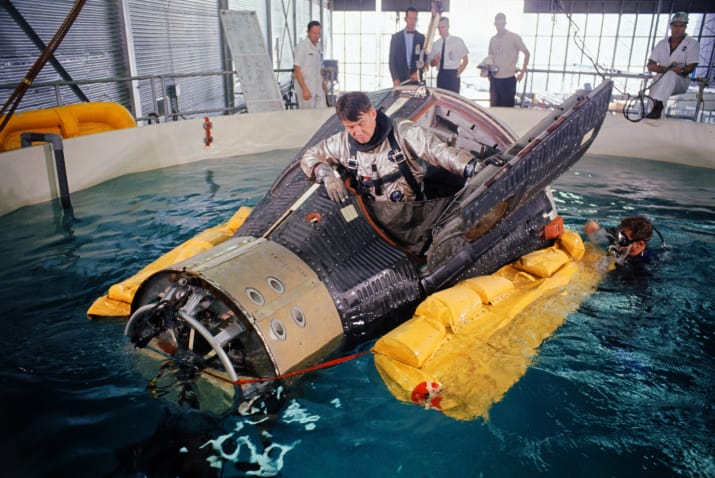
A view of several assorted dehydrated meals in plastic bags designed for astronauts on NASA’s Project Gemini space missions in 1963.

American astronaut John Young, in full space suit, tests the suit’s range of motion with a series of rulers mounted onto the frame of a space capsule in 1964.
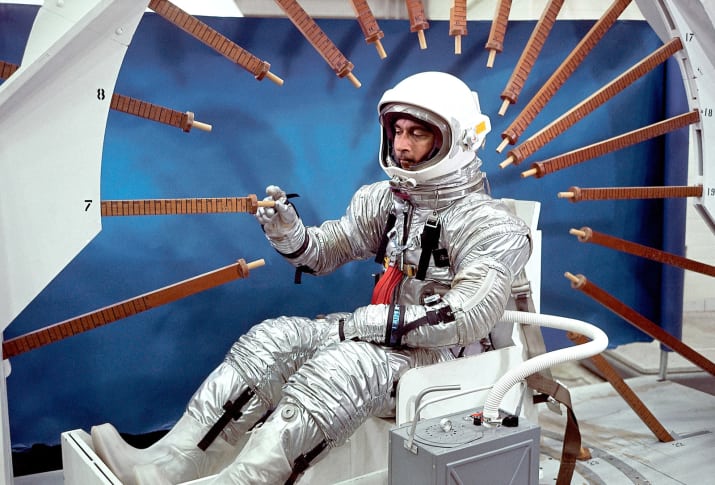
The crew of Apollo 12 polish their matching Chevrolet Corvette Stingrays in Cocoa Beach, Florida, 1969.
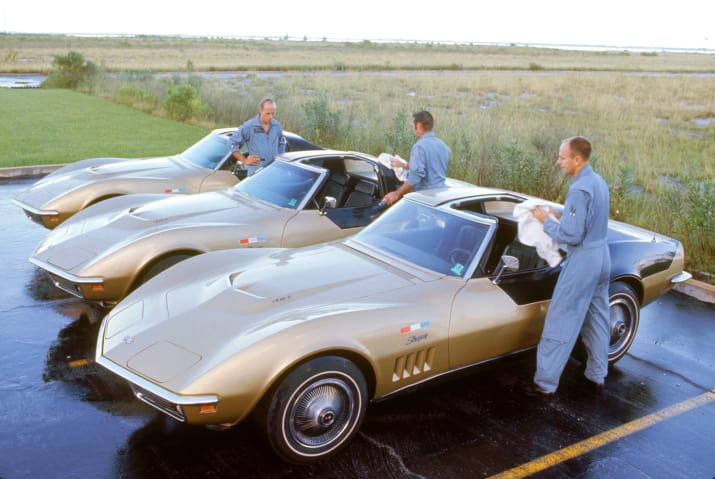
The Mission Operations Control Room in Houston, Texas, is seen during the fourth television transmission from the Apollo 13 spacecraft while en route to the Moon.
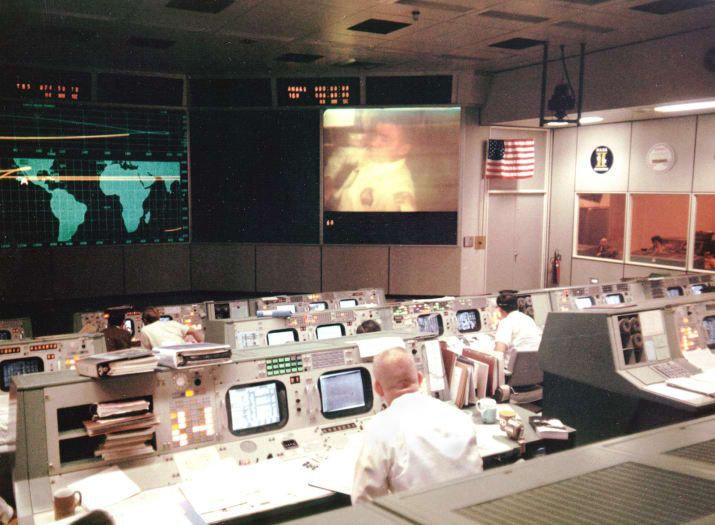
The rocket carrying the Mercury “Friendship-7” capsule with astronaut John Glenn aboard blasts off in Cape Canaveral, Florida, on February 20nd, 1962, for the first US manned orbital flight ever.
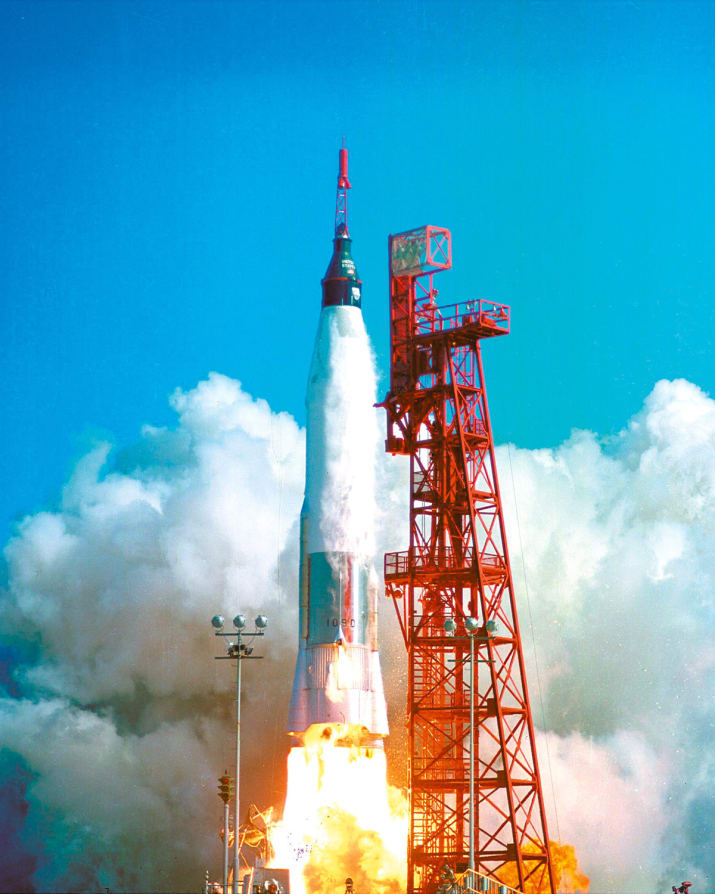
A heavy beard covers the face of astronaut Walter M. Schirra Jr., Apollo 7 Commander, as he looks out the rendezvous window in front of the Commander’s station on the ninth day of the Apollo 7 Earth orbital mission.
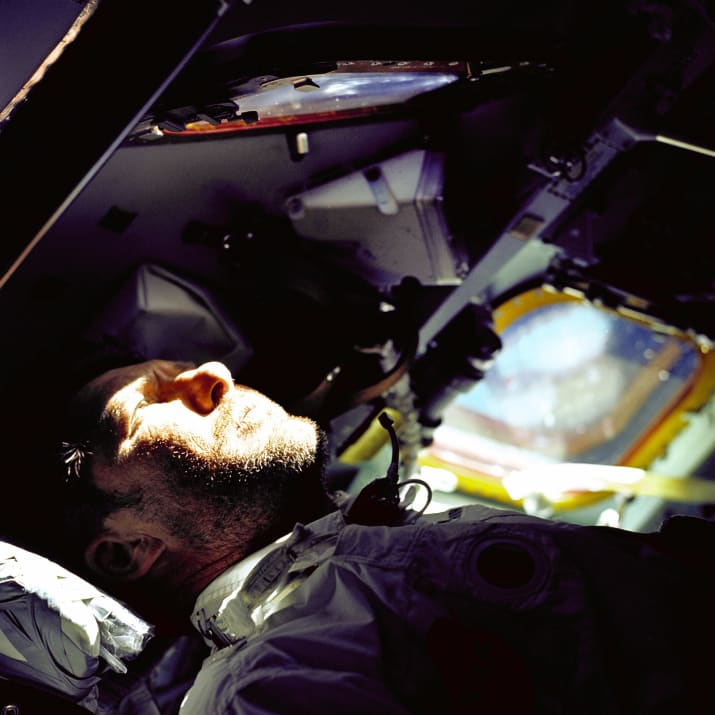
The reflections of Astronaut Neil Armstrong, the U.S. Flag, and the Lunar Module are reflected in the face mask of Astronaut Buzz Aldrin when his picture was taken by Armstrong as they walked across the surface of the moon on July 31st, 1969.
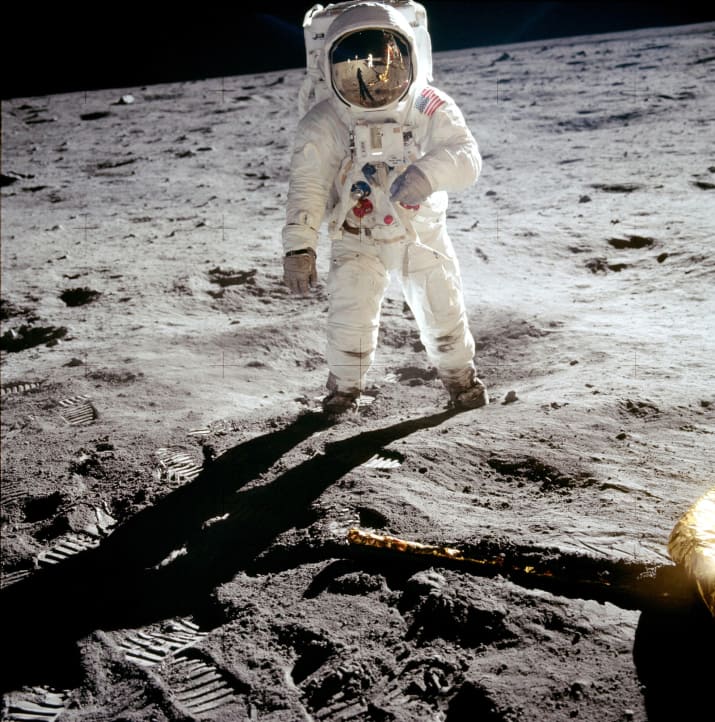
The reflections of Astronaut Neil Armstrong, the U.S. Flag, and the Lunar Module are reflected in the face mask of Astronaut Buzz Aldrin when his picture was taken by Armstrong as they walked across the surface of the moon on July 31st, 1969.
